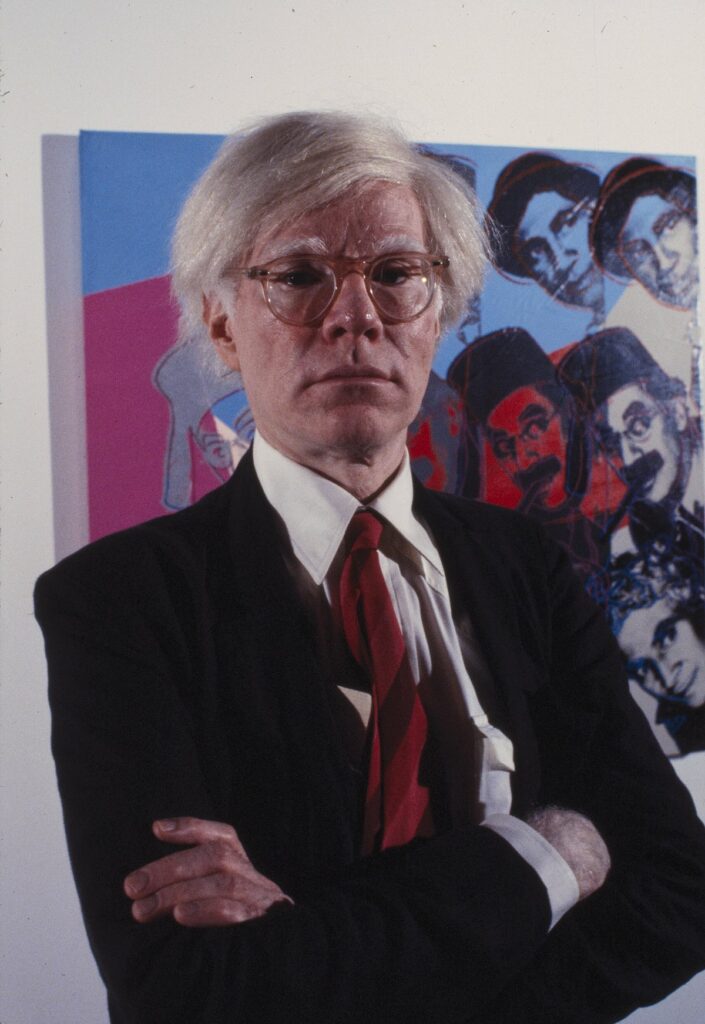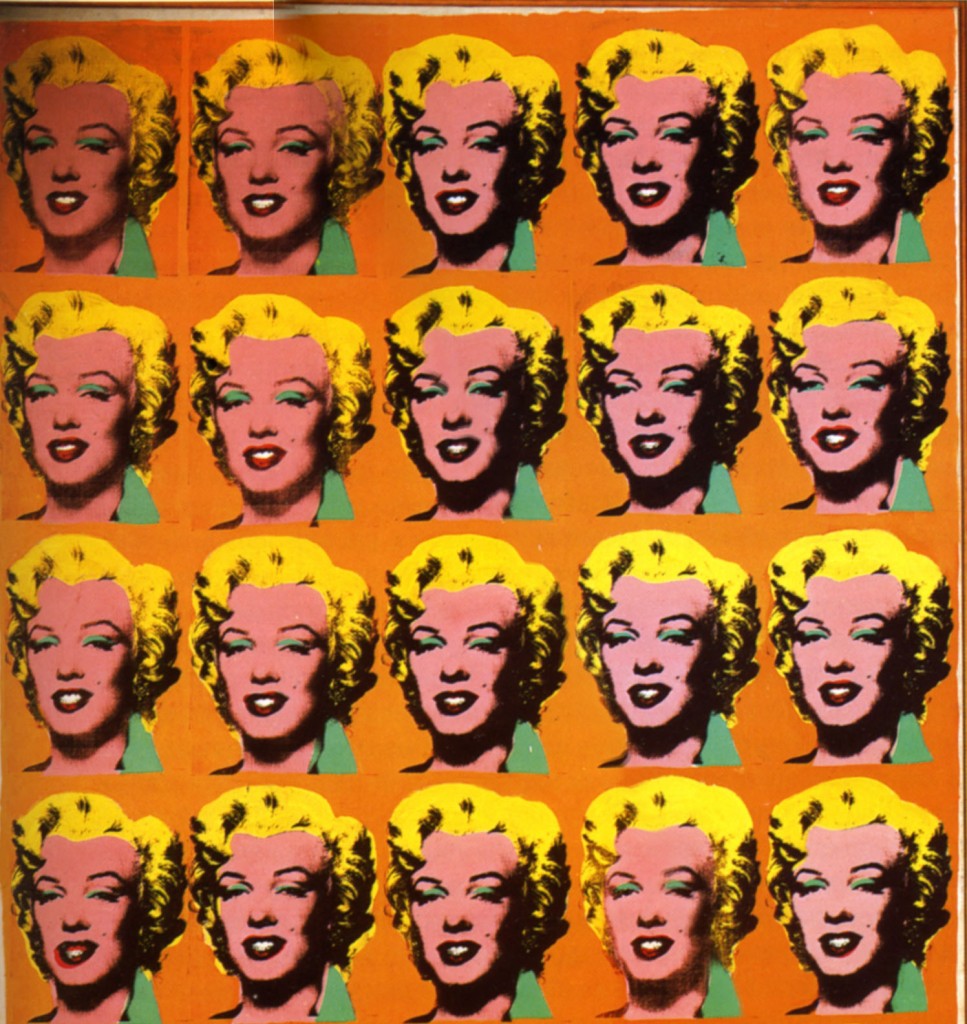Andy Warhol, the enigmatic maestro of pop art, has left an indelible mark on the art world with his provocative and innovative creations. Among his vast portfolio of works, “Marilyn Diptych” stands out as a poignant reflection on the intersection of celebrity, fame, and mortality. Through vibrant colors, repetitive imagery, and meticulous composition, Warhol invites viewers to delve into the complexities of contemporary culture and the allure of iconic figures.
Who was Andy Warhol

Andy Warhol wasn’t your average artist; he was a trailblazer who challenged the status quo and redefined the boundaries of art. Born Andrew Warhola in 1928, he hailed from humble beginnings in Pittsburgh, Pennsylvania. Despite facing adversity, Warhol’s passion for creativity propelled him into the spotlight of the art scene during the 1960s. His unconventional approach to art, characterized by mass production techniques and a fascination with popular culture, earned him widespread acclaim and cemented his legacy as one of the most influential artists of the 20th century.
FUN FACT: Andy Warhol was a bit of a hoarder. He collected and saved a vast array of objects, including newspapers, celebrity memorabilia, and even cookie jars.
His Career
Warhol’s journey to artistic prominence began in the bustling streets of New York City, where he honed his skills as a commercial illustrator in the 1950s. His distinctive style caught the attention of the art world, leading to his transition into fine art in the early 1960s. It was during this time that Warhol established “The Factory,” a creative hub where artists, musicians, and celebrities converged to collaborate and experiment.
Warhol’s art wasn’t just about pretty pictures; it was a reflection of society’s obsession with consumerism, fame, and mass media. He blurred the lines between high and low culture, elevating everyday objects and celebrities to the realm of art. From Campbell’s Soup cans to Coca-Cola bottles, Warhol’s subjects were as diverse as they were iconic, challenging viewers to reconsider the notion of artistic value and cultural significance.
What is Happening in Marilyn Diptych

| Artist | Andy Warhol |
| Date Created | 1962 |
| Medium | Silkscreen printing on canvas |
| Genre | Pop Art |
| Period | Contemporary |
| Dimensions | 205.4 cm × 144.8 cm (each panel) |
| Series/Versions | Unique piece |
| Where is it housed? | Tate Modern, London |
Now, let’s turn our attention to “Marilyn Diptych,” created by Warhol in 1962. This mesmerizing piece features fifty images of Marilyn Monroe, the epitome of Hollywood glamour and tragedy. At first glance, the repetition of Monroe’s image may seem superficial, but upon closer inspection, it becomes apparent that Warhol is exploring deeper themes of fame, mortality, and the ephemeral nature of celebrity.
The composition of “Marilyn Diptych” is both striking and symbolic. The left side of the diptych is vibrant and colorful, depicting Monroe in all her glory. These images represent the height of her fame, capturing the allure and magnetism that made her a cultural icon. However, as we move to the right side of the diptych, the colors begin to fade, and Monroe’s image becomes increasingly distorted. This gradual deterioration serves as a poignant reminder of the fleeting nature of fame and the inevitability of decay.
Interesting Facts
“Marilyn Diptych” was Warhol’s response to the tragic death of Marilyn Monroe in 1962. Using a publicity still from her film “Niagara,” Warhol transformed Monroe into an enduring symbol of beauty, fame, and vulnerability.
The diptych format, with two panels side by side, is reminiscent of religious icons, adding a layer of irony to Warhol’s exploration of celebrity worship and mass culture.
Each image of Monroe in “Marilyn Diptych” was created using the silkscreen printing technique, allowing Warhol to mass-produce his iconic imagery while simultaneously commenting on the commodification of celebrity.
Despite its seemingly straightforward composition, “Marilyn Diptych” is a complex meditation on the fleeting nature of fame and the power of mass media to immortalize and distort our perceptions of reality.
Artwork Spotlight: Wild Raspberries (Greengauges a la Warhol)

“Wild Raspberries (Greengauges a la Warhol)” is a playful picture by Andy Warhol, appropriated in the humorous cookbook by Suzie Frankfurt and him. Warhol’s striking and eye-catching style, using a playful approach, recolors daily foods into a visually attractive and imaginative canvas, merging art and the ordinary.
Frequently Asked Questions
What is the Marilyn Diptych about?
The Marilyn Diptych comprises a series of fifty silkscreen images featuring the actress, all sourced from the 1953 film Niagara. Warhol stated: “In August 1962, I commenced creating silkscreens. I aimed for a bolder aesthetic that evoked an assembly line effect.”
What is the meaning behind Andy Warhol’s Marilyn Monroe?
Commenced in 1962, Andy Warhol’s widely recognized Marilyn screen-prints immortalize the Hollywood star during her peak. Responding to her tragic demise, Warhol crafted these paintings and subsequent prints as a manifestation of his enduring fascination with the captivating allure and enigmatic allure of pop culture.
What happened to Andy Warhol in 1962?
In 1962, Warhol embraced one of his most distinctive techniques: photographic silkscreen printing. This industrial method provided him with the means to effortlessly replicate the images he borrowed from mainstream culture.
Conclusion
“Marilyn Diptych” is more than just a portrait of Marilyn Monroe; it is a timeless masterpiece that continues to captivate audiences with its depth, complexity, and emotional resonance. Through Warhol’s lens, Monroe transcends the confines of celebrity to become a symbol of our collective obsession with fame, beauty, and the passage of time. As viewers gaze upon her image, they are confronted with the paradox of immortality and decay, reminding us that even the most iconic figures are subject to the whims of fate. In a world where fame is fleeting and beauty is ephemeral, “Marilyn Diptych” serves as a powerful reminder of the enduring power of art to challenge, provoke, and inspire.













